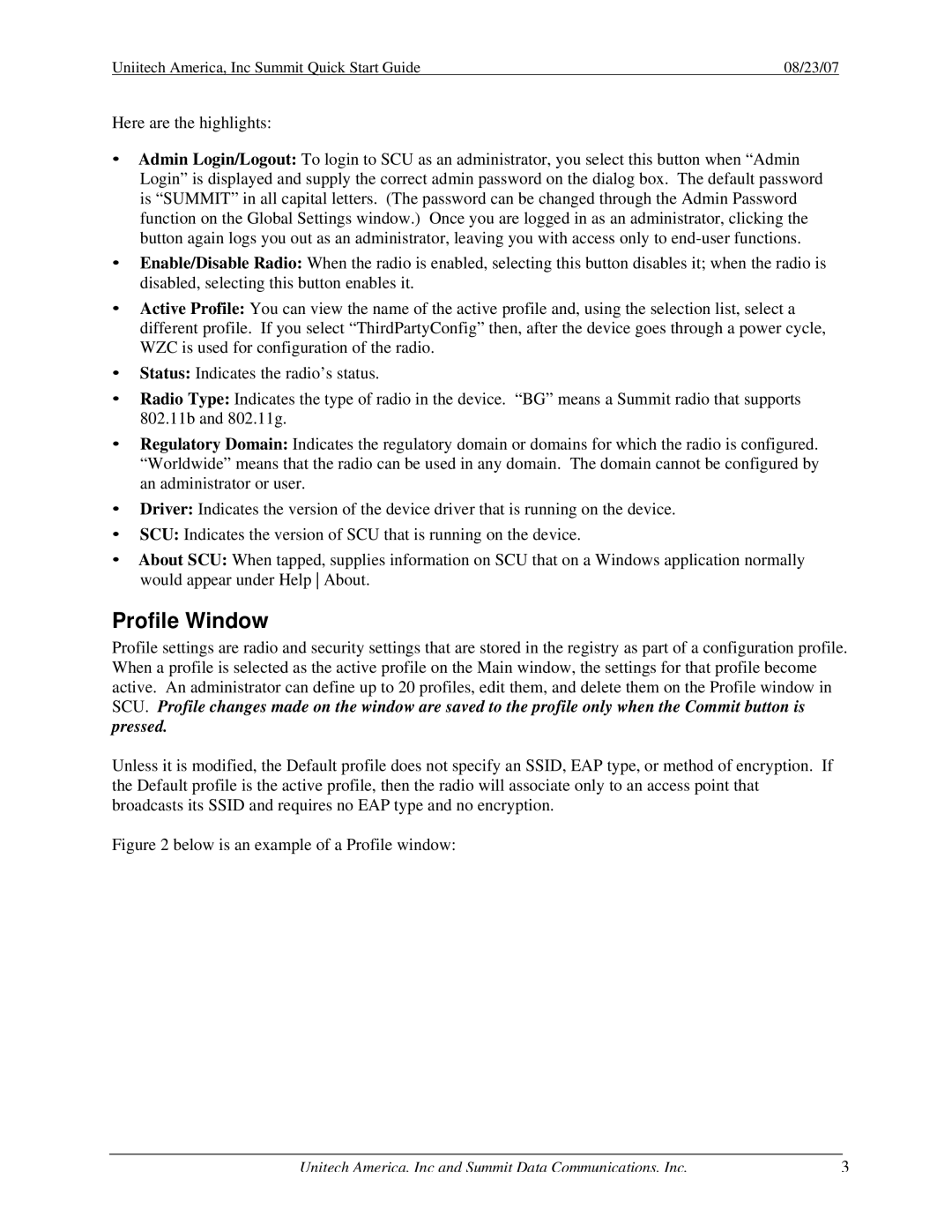Uniitech America, Inc Summit Quick Start Guide | 08/23/07 |
Here are the highlights:
•Admin Login/Logout: To login to SCU as an administrator, you select this button when “Admin Login” is displayed and supply the correct admin password on the dialog box. The default password is “SUMMIT” in all capital letters. (The password can be changed through the Admin Password function on the Global Settings window.) Once you are logged in as an administrator, clicking the button again logs you out as an administrator, leaving you with access only to
•Enable/Disable Radio: When the radio is enabled, selecting this button disables it; when the radio is disabled, selecting this button enables it.
•Active Profile: You can view the name of the active profile and, using the selection list, select a different profile. If you select “ThirdPartyConfig” then, after the device goes through a power cycle, WZC is used for configuration of the radio.
•Status: Indicates the radio’s status.
•Radio Type: Indicates the type of radio in the device. “BG” means a Summit radio that supports 802.11b and 802.11g.
•Regulatory Domain: Indicates the regulatory domain or domains for which the radio is configured. “Worldwide” means that the radio can be used in any domain. The domain cannot be configured by an administrator or user.
•Driver: Indicates the version of the device driver that is running on the device.
•SCU: Indicates the version of SCU that is running on the device.
•About SCU: When tapped, supplies information on SCU that on a Windows application normally would appear under Help About.
Profile Window
Profile settings are radio and security settings that are stored in the registry as part of a configuration profile. When a profile is selected as the active profile on the Main window, the settings for that profile become active. An administrator can define up to 20 profiles, edit them, and delete them on the Profile window in SCU. Profile changes made on the window are saved to the profile only when the Commit button is pressed.
Unless it is modified, the Default profile does not specify an SSID, EAP type, or method of encryption. If the Default profile is the active profile, then the radio will associate only to an access point that broadcasts its SSID and requires no EAP type and no encryption.
Figure 2 below is an example of a Profile window:
Unitech America, Inc and Summit Data Communications, Inc. | 3 |
